Ranked: Australia’s 20 biggest wine companies
From humble beginnings, Australian wineries now punch above their weight globally with the top ones a mix of big corporations and plenty of family affairs.

From humble beginnings sown from cuttings brought over from Europe, the Australia wine industry has grown to be one of the world’s top exporters, driven by brands held in high esteem globally.
Using data compiled by Winetitles Media and independent research, News Corp Australia has compiled a list of Australia’s top wine companies.
Where it sits now as an industry is the result of booms and busts, of corporate buyouts, mergers and divestments, but mostly, as the list attests, of family.
It’s also about brand and technology innovation, and a particularly Australian chutzpah to take a risk and do things a bit differently, whether that be by launching a brand - now the world’s most powerful wine brand - with kangaroos on the label, or developing a new table wine against the wishes of management, as the maverick Max Schubert famously did when developing Penfolds Grange.
More detailed data can be found in Winetitles’ 2021 Australian & New Zealand Wine Industry Directory and also in a TOP 20 Australian Wine Producers article in the April edition of the Australian & New Zealand Grapegrower & Winemaker magazine.
1. Treasury Wine Estates
Revenue: $2.68bn (FY20)
Employees: 3400+
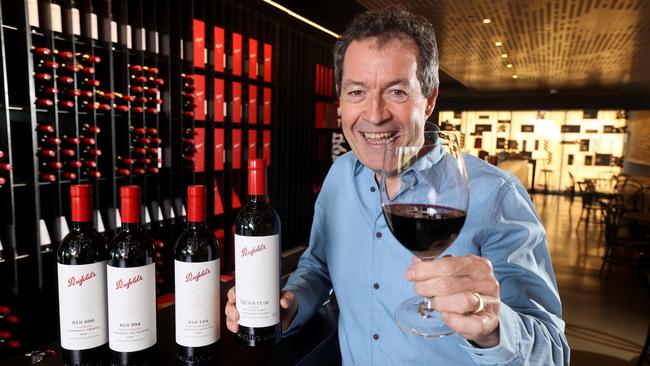
Treasury Wine Estates is the nation’s largest wine producer, and in Penfolds, it has the ultimate brand. While there’s always much interest and debate about the pricing of Penfolds Grange - the super-premium flagship wine - the team has done a superb job over the years of crafting a halo of luxury and exclusivity around the entire brand portfolio which is unparalleled in Australia. Take for example the Penfolds Ampoule released in 2012. Only a dozen, priced at $168,000 and filled with Block 42 Cabernet, were made, and were snapped up by collectors immediately. When you were ready to open your ampoule, you needed to flick a note to Penfolds who’d send one of their winemakers anywhere in the world to crack the bespoke-crafted creation open for you.
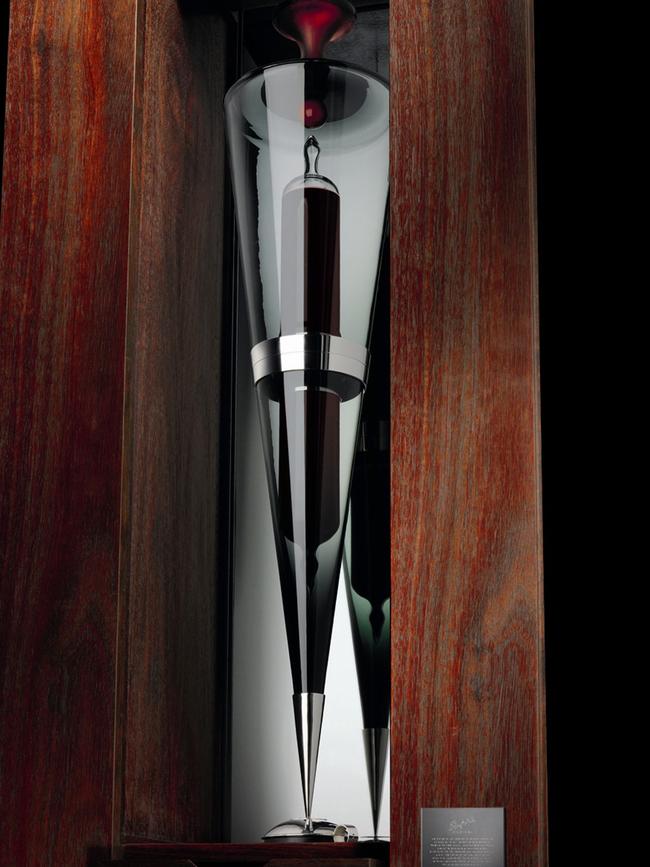
The company says to date they haven’t received a call, so presumably they’re all still intact. This year, for the 70th anniversary of Grange, it was a limited edition, $95,000 record player - an homage to Grange creator Max Schubert’s love of music. Only seven were made. And in Peter Gago, the company has one of the nation’s best storytellers, of untold value to the company. Treasury had considered splitting off Penfolds into a separate entity - a plan which was shelved in early 2021.

But the strategy across all brands, since the company was created out of the demerger of Foster’s in 2011, has been premiumisation. It has had its ups and downs since its creation, destroying $35m of wine and providing $40m in discounts in the US in 2013 to get rid of excess wine stocks. When Michael Clarke came in from a fast moving consumer goods background in 2014 he shook things up - almost immediately moving the Grange release to a more sales-friendly time of the year (before Christmas and Chinese New year) for example.
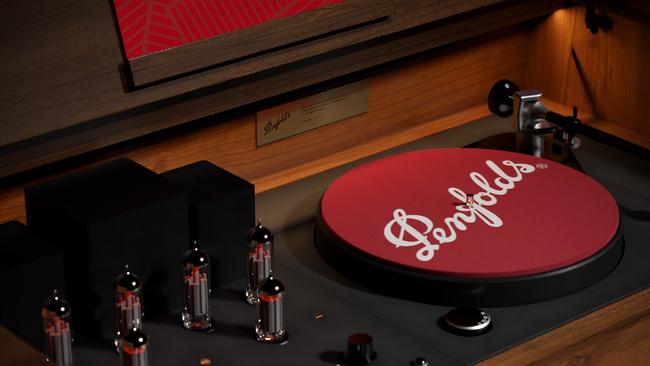
The share price soared from $4 to more than $19 by mid-2018, however the company suffered from a reported high turnover of senior staff and well before the Chinese tariffs all but destroyed the Australian wine export market to that country, the share price was under pressure - although total shareholder return over the past decade is still sitting at 16 per cent after a decent share price recovery this calendar year. Under current chief executive Tim Ford the company divested several commercial brands in the US in March, saying it wanted to focus on its premium offering. Earlier this year Penfolds released its first California collection, including wines using grapes from the Napa Valley, with the Quantum selling for $950 a bottle.
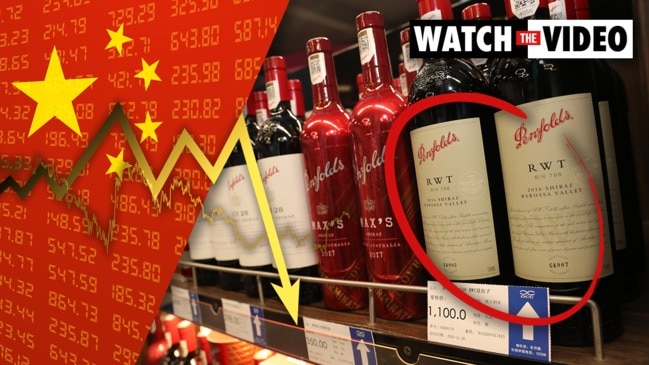
2. Pernod Ricard Winemakers
Revenue: Not provided
Employees 780

Jacob’s Creek owner Pernod Ricard - locally Pernod Ricard Australia - is embracing innovation on a number of fronts, testing “Autonomous Vineyard Tractors” in its New Zealand vineyard, incorporating artificial intelligence into its production processes and in an audacious marketing campaign overseas, encouraging people to “drink more”.
It’s a new take on the “drink responsibly” message, with the company encouraging people to drink more water along with their tipple of choice in a digital and print campaign across initially the UK, Europe and Latin America.

Pernod Ricard Australia owns one of Australia’s best-known wine brands - Jacob’s Creek, which is produced at Rowland Flat in the Barossa Valley, and which was first released in 1976 by Orlando Wines.
Synonymous with Australian wine especially in the UK, Jacob’s Creek has been a runaway success, and has been the number one Australian wine brand in several export markets and is shipped to about 70 countries.
Other brands in the Pernod Ricard stable include fellow Barossa label St Hugo, George Wyndham and Marlborough’s Brancott Estate and Stoneleigh
Rumours swirled in 2019 that Pernod was looking to sell its wine division, however that push seems to have abated.
Globally the company’s brands include Absolut, Jamesons, Chivas Regal, G.H. Mumm and Beefeater.
3. Accolade Wines
Revenue: $528m
Employees: 1500+
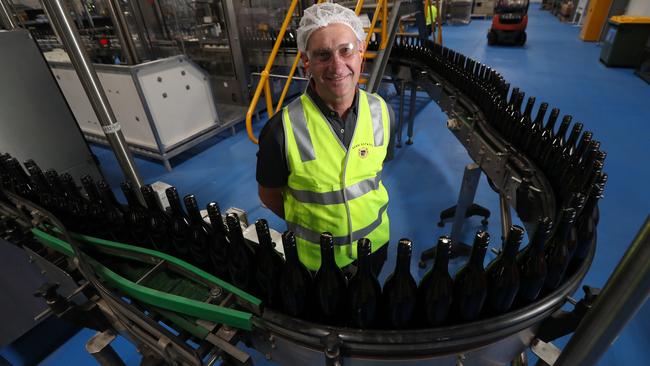
Private equity-owned Accolade has been on the acquisition trail in recent years and appears to be beefing up its quality offering ahead of a possible stock exchange listing.
Carlyle Group picked up Accolade, and brands including Banrock Station, BRL Hardy, Adelaide-Hills based Petaluma, and Barossa-based St Hallett, for $1bn in 2018, and under chief executive Robert Foye Accolade has also bought the Barossa’s Rolf Binder Wines and Katnook Estate in the Coonawarra.
Mr Foye, a former Treasury Wine Estates executive, has flagged a possible listing on the ASX or in Hong Kong in the next few years, and said in March Accolade was targeting growth of about 25 per cent in the recently finished financial year.
The birth of what we now know as Accolade started in 2003, when Constellation Brands bought BRL Hardy, creating what it said at the time was the world’s largest wine business. In 2011, private equity company CHAMP bought an 80 per cent interest in the UK and Australian divisions, renaming it Accolade Wines.

Big buys over the next decade include Grant Burge and in 2017 the Fine Wine Partners portfolio taking in St Hallett, Petaluma, Croser, Stonier, Knappstein (now owned by Australian Yinmore Wines) and Tatachilla.
Accolade’s Berri winery - the largest grape processor in the Southern Hemisphere according to the company - processes a large proportion of South Australia’s entire grape harvest – over 220,000 tonnes – and produces tens of millions of litres of wine in cask and bottle every year.
The company told News Corp Australia last year the facility could turn out “100,000 cases of bottled wine and 400,000 casks per week, and can store up to 26,000 pallets of product’’.
Globally it produces wine in New Zealand, the US, Chile, Italy and South Africa.
It also bottles at the 80,000sq m Accolade park in the UK - the largest wine production facility in Europe, capable of filling more than one million bottles per day.
The original Hardy’s Wines was established in 1853. The company produced 178 million litres of wine in 2019 and exports to more than 130 countries.
4. Casella Family Brands
Revenue: $505m
Employees: 750
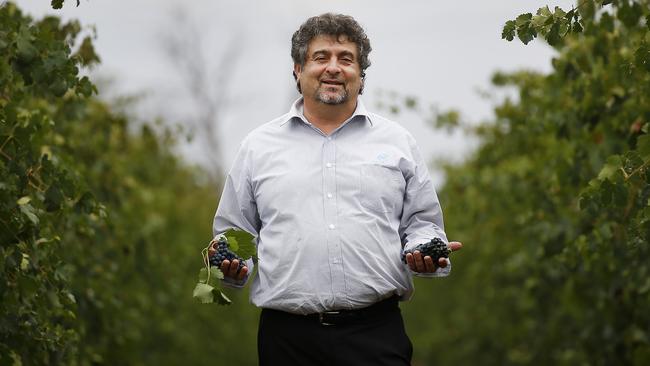
In wine, brand is pretty much everything, and in Yellowtail, Casella has literally the strongest wine brand in the world.
Wine Intelligence’s Global Wine Brand Power Index in 2020 ranked Yellowtail number one ahead of Chile’s Casillero del Diablo, with Australia’s Jacob’s Creek in fourth and Lindeman’s in 11th.
Casella, founded by Maria Casella and her husband Filippo, who migrated from Italy in 1957, is another story of immigrant success in the wine field.
The company, by its own admission, found success “After many years of hard work and struggle” with John Casella’s creation of the consumer-friendly [yellow tail] brand, which first shipped in 2001.
While wine snobs may have turned up their noses at the simple sales pitch and branding, which relies on the iconic Aussie kangaroo, the proof was in the drinking – and selling – and the brand is synonymous with Australian wine across the US and increasingly more widely.
“Our initial plan was to sell over 25,000 cases in the first year, however actual sales were well over one million cases in 13 months,’’ the company’s website says. By 2003 global sales reached five million cases, and by 2011, the company says it was the nation’s largest single wine export.
The NSW-based company’s mass market success has allowed it to add up-market brands to its stable, buying the Barossa-based Peter Lehmann Wines in 2014, Brand’s Laira of Coonawarra in 2015, and Morris Wines of Rutherglen in 2016.
The company has recently released a new organic wine brand, Atmata, including vegan-friendly options and also produces whisky through its Copper & Grain Distilling Co subsidiary.
In 2019-20 the company reported record sales, with revenue of $513.38m, up more than $20m.
Profit hit $48.75m, up from $33.73m in 2019, a gain of 44.5 per cent.
The Griffith-based winemaker was recently valued at around $1.5bn.
5. Australian Vintage
Revenue: $267.1m
Employees: 400+
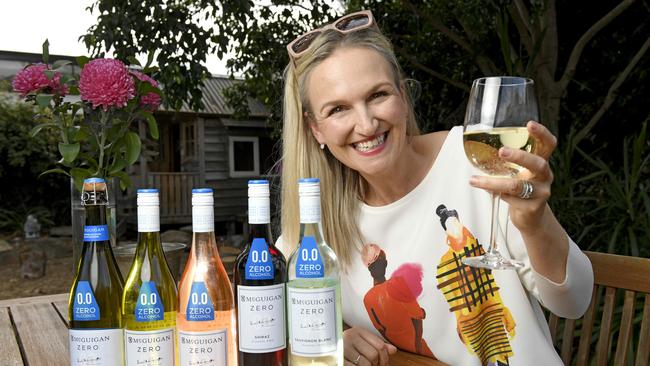
One of the few listed wine companies on the ASX, Adelaide-based Australian Vintage has been quietly transforming in recent years away from bulk wine to branded sales. The result has been borne out in solid returns for shareholders, with a total shareholder return of more than 90 per cent in the past year and more that 10 per cent annually over five years. The company has had limited exposure to China - good in the current environment - and grew sales in the UK/Europe/Americas segment by 12 per cent last financial year. The company has also leaned in to the trend for zero alcohol wine, with its McGuigan Zero range the “standout performer” last year, now representing 7 per cent of sales. The company’s flagship brands are McGuigan, Tempus Two and Nepenthe. Australian Vintage’s Buronga Hill Winery in the Sunraysia district of southern NSW is the third largest winery in Australia, with 100 per cent of its energy coming from renewable sources. The company’s head office is in the Adelaide metro area and it owns three vineyards in the Adelaide Hills, one vineyard in the Barossa, one vineyard in the Riverland and one in the NSW Murray Darling area.
6. De Bortoli Wines
Revenue: $148m
Employees: 400
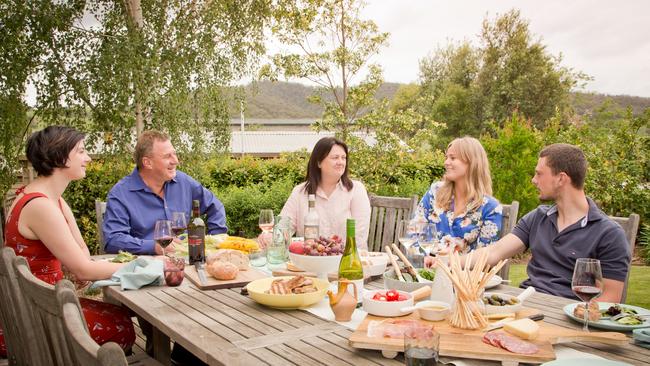
Back in 1924 Vittorio de Bortoli travelled from Castelcucco, northwest of Venice, to New South Wales, and a year later ended up in Griffith. Working hard - even spending some time living under a rain water tank - Vittoria was soon joined by fiance Giuseppina, and in 1928 they bought a 55 acre mixed fruit farm. “That year there is a glut of shiraz grapes, many farmers see it cheaper to let them rot,’’ the de Bortoli history says.
“Vittorio takes them for free and crushes 15 tonnes of shiraz grapes.
“Local Italians and other European workers in the area offer to buy wine off him. De Bortoli Wines is born. The next year, Vittorio and Giuseppina get married on the farm.’’
Almost 100 years later, the still family-owned wine company has, in addition to the Bilbul winery at Griffith, assets including a vineyard in the King Valley, and wineries and vineyards in the Hunter Valley and Yarra Valley as well as Rutherglen Estate which it acquired in 2018. De Bortoli is also now well-known for its commitment to sustainability, having installed a large solar installation and winning several awards recognising its strides in the field. The company produced 49 million litres of wine in 2019. recent product launches includes the 17 TREES and Grenache Wizardry brands as well as a King Valley prosecco. De Bortoli’s Noble One botrytis semillon, created by Darren De Bortoli in 1982, is “still one of the most awarded wines in history’’, the company says.
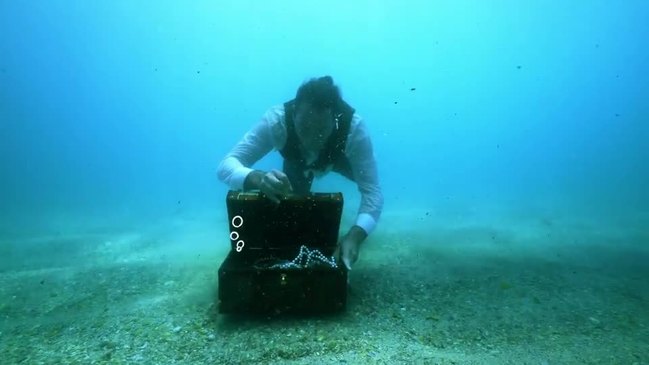
7. Warburn Estate
Revenue: $97.4m
Employees: 150
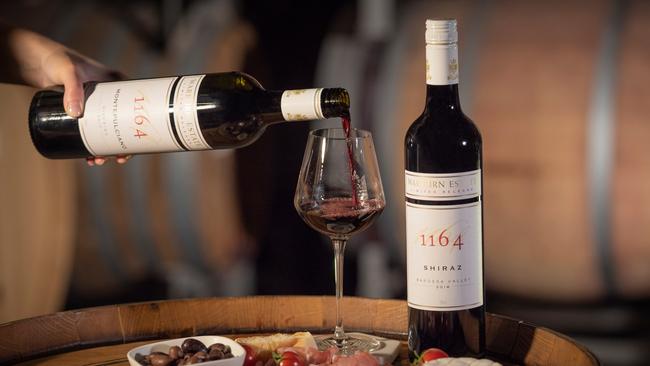
Griffith-based Warburn Estate is another family affair, with Giuseppe and Amria Sergi, who emigrated from Calabria, Italy to Australia in 1952, working in the agriculture sector until they had the wherewithal to buy their own farm and put in their own vines in about 1968. The Italian-style wine soon became popular, and the cellar door, established in 1969 doing a brisk trade in 2l flagons of fortifieds including cream cherry, Blackberry marsala, brown muscat and the like.
“In 1989, the demand of wine grew and this is when (Giuseppe’s son) Antonio and his father began planting more grapes for more varietals including shiraz, cabernet, sauvignon blanc and Chardonnay,’’ the company’s website says.
“They then moved onto another farm by the name of 1164 and began planting Italian varietals.. montepulciano, durif, lambrusco and lagrien.’’
The company now exports to about 30 countries and produces more than 33 million litres of wine annually off more than 1100ha of vineyards.
Warburn has the capacity to crush 45,000 tonnes and has storage for 42.5 million litres, equivalent to about 56.5 million bottles and 9.5 million cases.
It launched an online portal last year in response to the pandemic, and is the producer of the low-cost Gossips range, which is reportedly the fastest growing brand under the $7 price point.
Warburn sells about 80 per cent of its product into the domestic market, particularly to Woolworths Group and independent liquor stores
The winery is currently run by the third and fourth generation of the Sergi family.
8. Kingston Estate Wines
Revenue: $95m
Employees: 200

Bill Moularadellis’s Kingston Estate is a bulk wine specialist - to take nothing away from its bottled varieties - but with 60 million litres of wine shipped a year, exported in 24,000l flexi tanks - they’re one of the key players in the commercial export market. More than 60% of Australia’s wine is exported in bulk. The company says 50 to 70 bulk tanks leave its premises each week and Kingston Estate is one of Australia’s largest grape growers with more than 3000 hectares of , with vineyards in the Riverland ,Coonawarra, Clare Valley, Limestone Coast and central Victoria. The winery this year crushed 85,000 tonnes and made more wine than the Barossa, McLaren Vale ,Adelaide Hills and Clare regions combined.
The winery, originally built in 1985, is now effectively two wineries, with one making small batch super premium wines, and the other efficiently producing under $10 /bottle commercial wine that has found favour in all of our major export markets . Kingston Estate is an immigrant success story, with Bill’s parents emigrating from Greece independently before meeting each other picking grapes in the Riverland in 1961. They bought a plot of land and picked the first grapes from their own vineyard in 1965. Bill set up a winery next to the family vineyard in 1985 and has gone from strength to strength since. “From these beginnings we have grown to become one of Australia’s most significant grape growers and wine exporters, strongly focused on long term relationships with customers around the world and building our reputation for quality, reliability and continuous improvement,’’ he says on the company website. The next generation of the family is already well along the path of growing the family business, with Bill’s daughters setting up the Mo Sisters brand in 2016.
9. Yalumba
Revenue: $86m
Employees: 200+
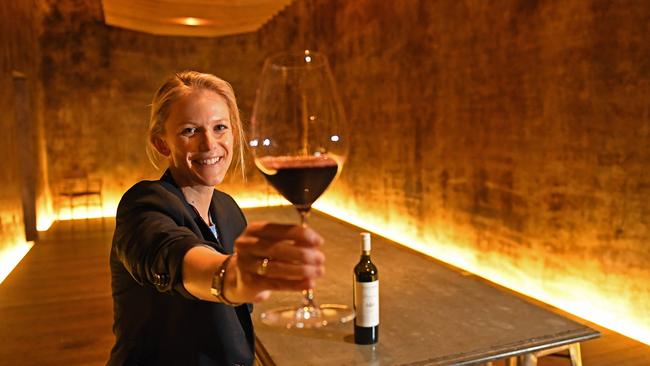
“Fiercely independent” is the catchcry at Yalumba, and for six generations the wine company founded by Samuel Smith has been a stalwart of the Barossa.
Yalumba, founded in 1849, also operates the only cooperage in the southern hemisphere as well as a nursery where research is carried out as well as supplying the industry.
Robert Hill-Smith heads up the family firm as its fifth-generation custodian, and also established “Australia’s First Families of Wine” as a collaboration between the family-owned companies which underpin the Australian wine sector. Nick Waterman has been managing director since 2015. The winery’s The Signature wine is sought after by collectors and The Caley, which retails for about $400, is the company’s top-shelf wine. The Caley cabernet and shiraz honour third-generation Fred Caley Smith who “took to the seas on a grand scientific discovery in 1893 and returned with progressive horticultural developments that laid the foundation of sustainable viticulture and winemaking at Yalumba today’’. Yalumba is heavily focused on sustainability, with at least a hectare of native vegetation for each hectare of vineyard, and in 2016 installed what was then the largest solar system in Australian winery.
The Yalumba Nursery, which propagates about two million vines a year to supply the broader industry was in 2020 awarded a matched $1 million grant from the South Australian State Government to establish a germplasm nursery in the Riverland.
10. Tahbilk Group
Revenue: $80.4m
Employees: 100+

Established in 1860, Tahbilk sits on a 1200ha property with vast frontage to the Goulburn River. The family-owned winery, headed by chief executive Alister Purbrick, are seeking new markets for the quarter of its exports which went to China, with Mr Purbrick telling Winetitles that they didn’t expect the trade issues with China to resolve any time soon. The company’s awards stretch back to 1899 at least, when the winery was awarded the Diploma of Honour, the highest award obtainable at the Greater London Exhibition, according to the company website.
Tahbilk has 200 hectares of vineyards specialising in grape varietals from the Rhone including whites varietals: marsanne, viognier and roussanne and red varietals shiraz, grenache and mourvedre.
Mr Purbrick told The Australian late last year the company had mitigated the collapse in sales at restaurants and bars during COVID-19 with a booming wine club business and higher bottle shop sales as consumers drink at home.
11. Seppeltsfield Wines/Randall Wine Group
Revenue: Not supplied
Employees: 130
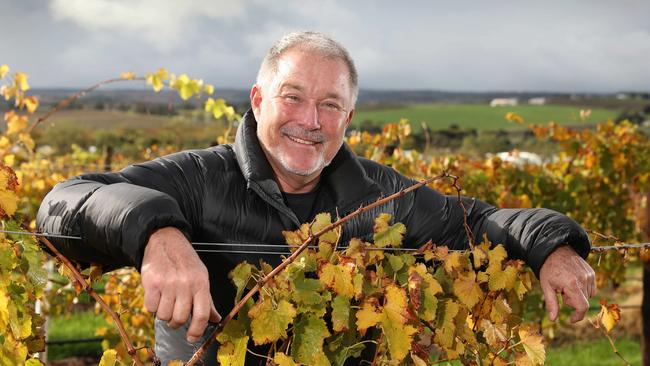
Headed by the dynamic Warren Randall, Seppeltsfield has been defined by reinvention since he took it over, albeit with great respect for the brand, and the winery’s heritage. Seppeltsfield was established in the Barossa Valley in 1851, by Joseph and Johanna Seppelt, just 15 years after the European settlement of South Australia. It remained under family ownership until 1985, and in 2009, was bought by Mr Randall, who had worked for the Seppelt family in the 1980s. Since then Seppeltsfield has evolved into a modern day village, with the winery and cellar door at its heart, together with destination restaurant FINO, Jam Factory and Vasse Virgin.
Seppeltsfield has long been internationally renowned for its treasure trove of fortified wines, highlighted by the Centennial Collection - the world’s only unbroken lineage of single vintage Tawny dating back to 1878. Now, the star is shining on the 170-year-old estate’s new chapter, an expanding range of luxury still wines, only possible since recently gaining full ownership of its trademark in 2017
Seppeltsfield is currently working on the development of a six star luxury hotel and day spa, Oscar Seppeltsfield, which is scheduled to open mid-2023.
It is described by Mr Randall as an iconic landmark for the Barossa and Australia – “gently positioned in the middle of the iconic Great Terraced Vineyard, originally planted in 1855”.
The Randall Wine Group is the parent company, and the largest private, luxury private vineyard holder in Australia, with total holdings of 3330 hectares across eight premium wine growing districts including the Barossa, McLaren Vale, Clare, Langhorne Creek, Currency Creek, Coonawarra, Eden Valley and the Riverland. Mr Randall got his break buying Tinlins with a couple of partners in the early 1990s and is now a supplier of luxury bulk wines to many of the large wine companies.
12. Angove Family Winemakers
Revenue: $60m
Employees: 160
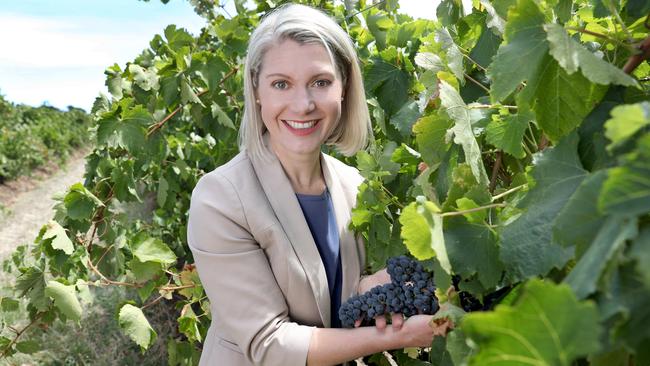
One of the older wine companies in SA - established in 1886 - the family-owned and operated Angove’s has, over the past 20 years, strategically redirected towards organic, sustainable viticulture and premium McLaren Vale winemaking.
“With this has come a move away from commodity and bulk wine trade as this part of the market did not suit the future aspirations for the family or business,’’ the company has previously told News Corp Australia.
“As such, on a tonnage basis we have changed our mix, taking in smaller but significantly more premium parcels of fruit.
“We are now Australia’s leading certified organic grape grower and winemaker (certified by ACO). We are incredibly grateful to have a hard working and committed team across the business who do an outstanding job.’’
Angove’s famously invented cask wine, with the process patented by Thomas Angove in 1965.
The family continues to own and operate the St Agnes Distillery. Vintage House Wine & Spirits is the family’s national sales, marketing and distribution business that represents a number of domestic and international brands in the Australian market.
The company told News Corp Australia recently that 2021 was the 15th year producing organic wines, and the company was now 100 per cent certified organic.
The company, which has operations in McLaren Vale and Renmark in the Riverland, experienced 35 per cent growth in organic wine sales in 2020, joint managing director Victoria Angove said.
“We have seen a real upsurge, not just in Australia, but in some of our export markets, with people far more engaged with what they’re consuming, and also far more aware of what they want their own environmental impacts to be,’’ Ms Angove said.
“We’ve spent a very long time getting to this stage and it’s really been the last five years that all of that groundwork we’ve been doing as a family business has been able to really accelerate.”
13. Qualia Wine Services
Revenue: $50m
Employees: 45
Qualia came into being in December 2009 through the acquisition of Neqtar Wines, which had failed owing creditors, including an Icelandic bank, about $54.8 million, according to reports from the time. Neqtar itself had bought a 40,000-tonne winery at Irymple from Evans & Tate in March 2006 for $22 million and scrip. These days Mildura-based Qualia is a bulk wine specialist with a selection of its own branded wines. including the Barramundi and Little Eden labels.
“Specialising in pre-vintage made-to-order projects, we supply to customers in 25 countries, including international distributors, supermarkets and brand marketers,’’ the company says on its website.
“We offer a limited release branded wine portfolio and bulk wine. We outsource all non-core, non-winemaking functions so we can offer greater flexibility and superior economy to our customers.
“We are proud to be a stable, debt free company and have successfully completed our first 10 year plan in 2017, achieving a crush in excess of 60,000 tonnes ranking us in the top six winemakers in Australia.’’
Qualia has done some heavy planting in recent years, telling Winetitles it had planted 250 acres of shiraz since 2019 and was following it up with 280 acres of cabernet sauvignon following the 2020 harvest. Stage three will be more shiraz and pinot noir, and there are future plans to use satellite imagery to monitor the health of the vines.
Qualia finished building a new winery in 2018 bringing onsite storage to more than 63.5 million litres and since 2018, all of the red wines have been vegan friendly, with whites following in 2020.
14. Brown Family Wine Group
Revenue: Not provided
Employees: 260
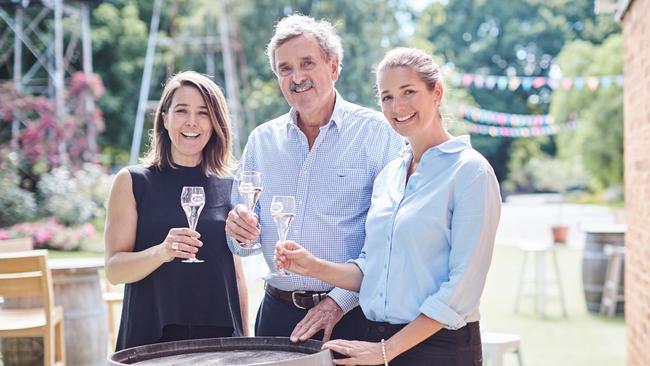
The Brown family harvested their first vintage at Milawa in Victoria’s King Valley in 1889, and the company’s holdings have evolved to include brands such as Brown Brothers, Devil’s Corner, Tamar Ridge, Pirie and Innocent Bystander. The winery, with sites in Victoria and Tasmania, was one of the first producers of prosecco in Australia. The company has led on the innovation front over the years, partnering with the CSIRO on viticulture research and developing new grape varieties. The fourth generation of the family is now deeply ensconced in the business, with Katherine Brown the first female winemaker in the organisation, and Eliza and Cynthia Brown on the board. The company told Winetitles it expanded into home delivery in Victoria’s northeast as a result of the pandemic, and a $1.2m expansion of its Devil’s Corner site at Apslawn in Tasmania was on the cards to be finished by Spring 2021.
15. Idyll Wine Co.
Revenue: Not for publication
Employees: 120
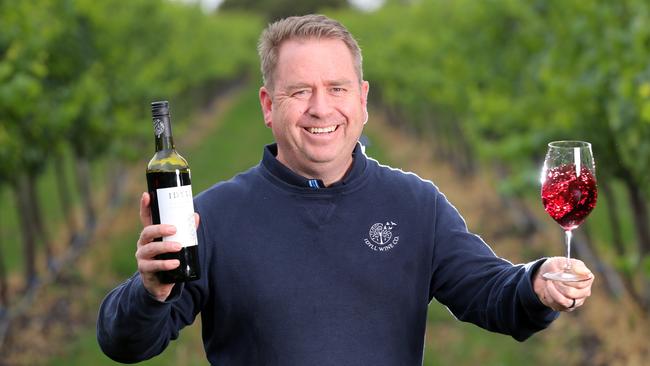
Located in the Moorabool Valley near Geelong, the original Idyll vineyards were planted in the late 1960s by Darryl and Nini Sefton. The company says some of those original plantings remain and the vineyard has been redeveloped to include pinot noir and pinot meunier.
“The winery itself has been extensively developed over the past decade and has an annual crush capacity of 15,000 tonnes,’' the website says.
“Fruit is drawn from throughout Victoria, New South Wales and South Australia and made on-site to our exacting specifications.
“In 2016 the Costa family invested in the company injecting new vigour and capital in the business. The team on the ground prides itself on continually pushing the boundaries of technology, technique and skill in order to produce wines of exceptional expression and quality.’’
The winery draws fruit from various regions including the Barossa Valley, Coonawarra, McLaren Vale and Adelaide Hills and produced 23 million bottles and 10 million cans in 2020 according to Winetitles.
Idyll does contract canning and bottling and can produce a variety of cider and RTD products.
In 2021 Idyll crushed more than 10,000 tonnes of fruit.
16. Zilzie Wines
Revenue: Not for publication
Employees: 50
The Forbes family have spent more than a century on their land at Karadoc in Victoria, with Ian and Roslyn Forbes converting the property to vineyards in the early 1980s. Brothers Andrew and Steven Forbes now manage the winery and vineyard - at 1700 acres they claim it’s among the largest in the district - with the winery crushing 60,000 tonnes per year. Zilzie also buys in fruit from regions such as the Adelaide Hills, Barossa, Coonawarra and Yarra Valley. The winery has also branched out into the low-alcohol sector, producing a “Liv Lighter” range coming in at nine per cent alcohol. The family highlights its environmental credentials, with a focus on reducing water use, using recycled packaged materials and is targeting being powered by 100 per cent renewable energy by 2025. Zilzie produces a wide range including prosecco, petit verdot, colombard and sangiovese.
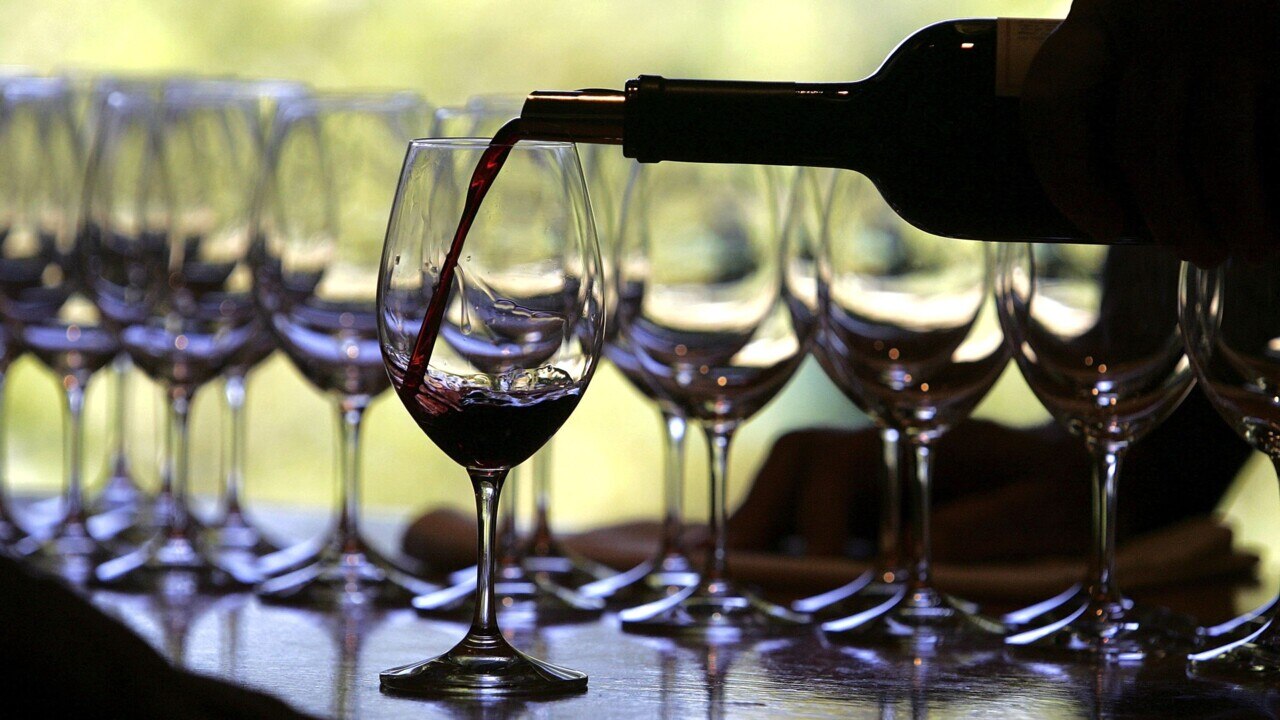
17. Andrew Peace Wines
Revenue: Not Provided
Employees: 100+
While this family-owned winery’s vineyard on the banks of the Murray River was established in the 1960s, it wasn’t until 1995 that it produced its first vintage. The crush has since grown from 1711 tonnes in that first year to about 43,000 tonnes. The winery produces a fairly standard range of whites and reds, but also bottles sagrantino - an Italian variety not widely planted in Australia and in relatively short supply even in its homeland. In 2020 the company produced 36.2 million litres of wine, up from 34.6 million the previous year.
18. Berton Vineyards
Revenue: $35m
Employees: 65
This NSW-based winery was set up in 1996 when Bob and Cherie Berton bought a block in “High Eden” in the Barossa’s Eden Valley, 450m above sea level. Starting out with shiraz and chardonnay, the company named their premium shiraz “bonsai” after a Swedish friend joked that their vines were looking a little underdeveloped through lack of water. In 2005 when a former Southcorp winery came on the market the Bertons teamed up with Jamie Bennett, Paul Bartholomaeus and James Ceccato to form “Berton Vineyards” the company. Production quickly ramped up from the Bertons’ 100-odd tonnes to 13,000 or so the following year in what they describe as “the scariest vintage we have all experienced’’. The company is now based in Yenda, NSW, and sources fruit from regions including Cowra, Barossa Valley, Padthaway, Eden Valley, and it recently bought a vineyard at Hanwood near Griffith. It produces more than 12 million litres of wine annually.
19. Calabria Family Wines
Revenue: $34.5m
Employees: not provided
The pride and joy of Italian immigrants who arrived in the 1920s and 1930s, the Griffith-based company was established as the Second World War ended, and was crushing a modest 84 tonnes by 1959. In 1996 the company sent its first container of wine to the UK and expansion plans grew the winery from 280 tonnes to 950.
This had grown to an 8000 tonne crush capacity at the winery by 2006, exporting to 36 countries and making Calabria a top-20 producer. The family company bought a 100 year old vineyard estate in the Barossa in 2015, and in 2019 opened a newly acquired cellar door and restaurant.
More recently it bought most of the assets and intellectual property of fellow Griffith-based wine company McWilliam’s Wines, which collapsed in February 2020 owing creditors more than $34m.
In April the group’s creditors backed a $46.25m proposal from Calabria and Medich Family Office to acquire the 143-year-old company, scotching a higher last-minute bid from rival De Bortoli.
Under the Calabria and Medich proposal, the company was split, with Calabria acquiring McWilliam’s Hanwood winery — home of the $13 flagons of sherry — and Medich taking over the Mount Pleasant winery and assets.
Calabria was to pay $32.25m and redundancy payments totalling $124,946.76 while Medich was up for $14m.
The company currently produces more than 14 million litres of wine annually.
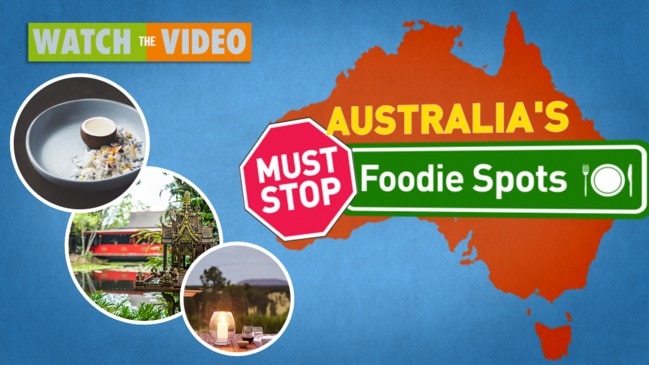
20. Salena Estate Wines
Revenue: Not provided
Employees: 50

Riverland-based Salena Estate is another family-owned affair, owned by Bob and Sylvia Franchitto and named after their daughter Salena. The winery is vertically-integrated, growing on 250ha of vineyards with the grapes processed through its own winery and bottling facility. The company also does contract bottling, and itself crushes 15,000 tonnes, exporting “over 400 containers to over 10 countries’’ the company says on its website. The BFR is a flagship wine - you can guess what the acronym stands for yourself - retailing at $99, while the company hits a number of price points across more than a dozen brands. Salena Estate produces more than 10 million litres of wine per year. Salena is one of the nation’s largest producers of organic wines, making about 150,000 cases per year. It also last year opened a premium Italian restaurant, Cucina 837.



